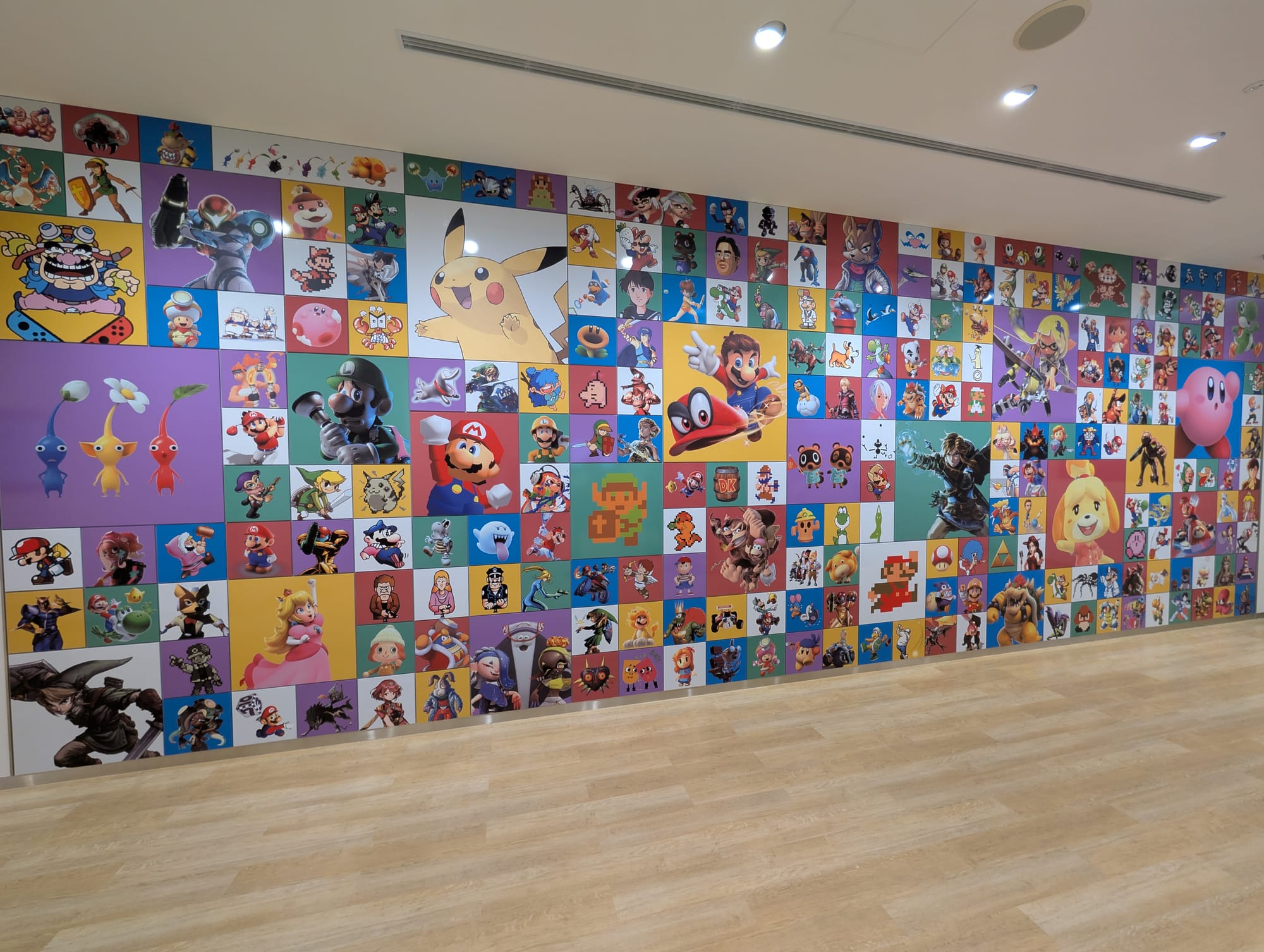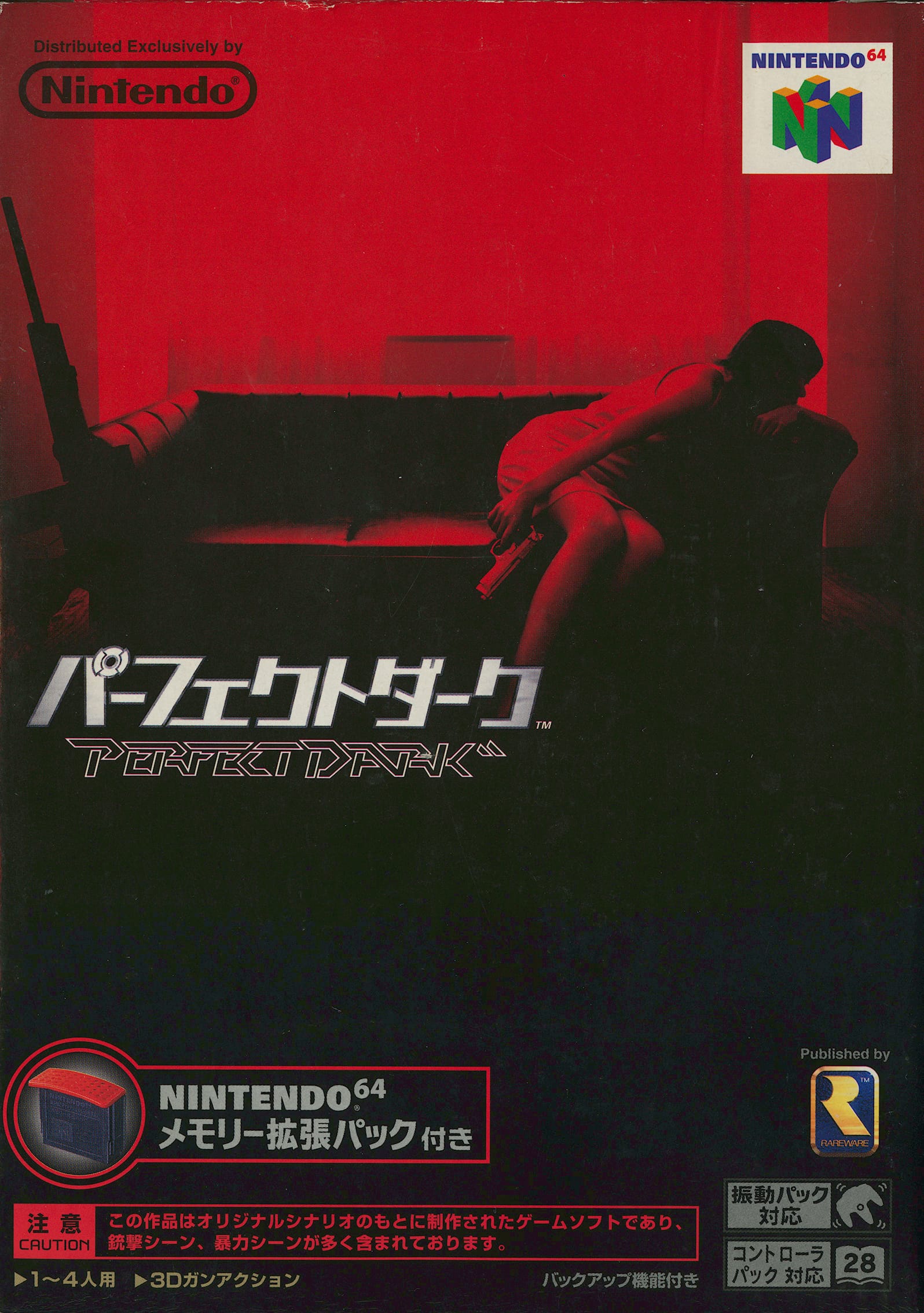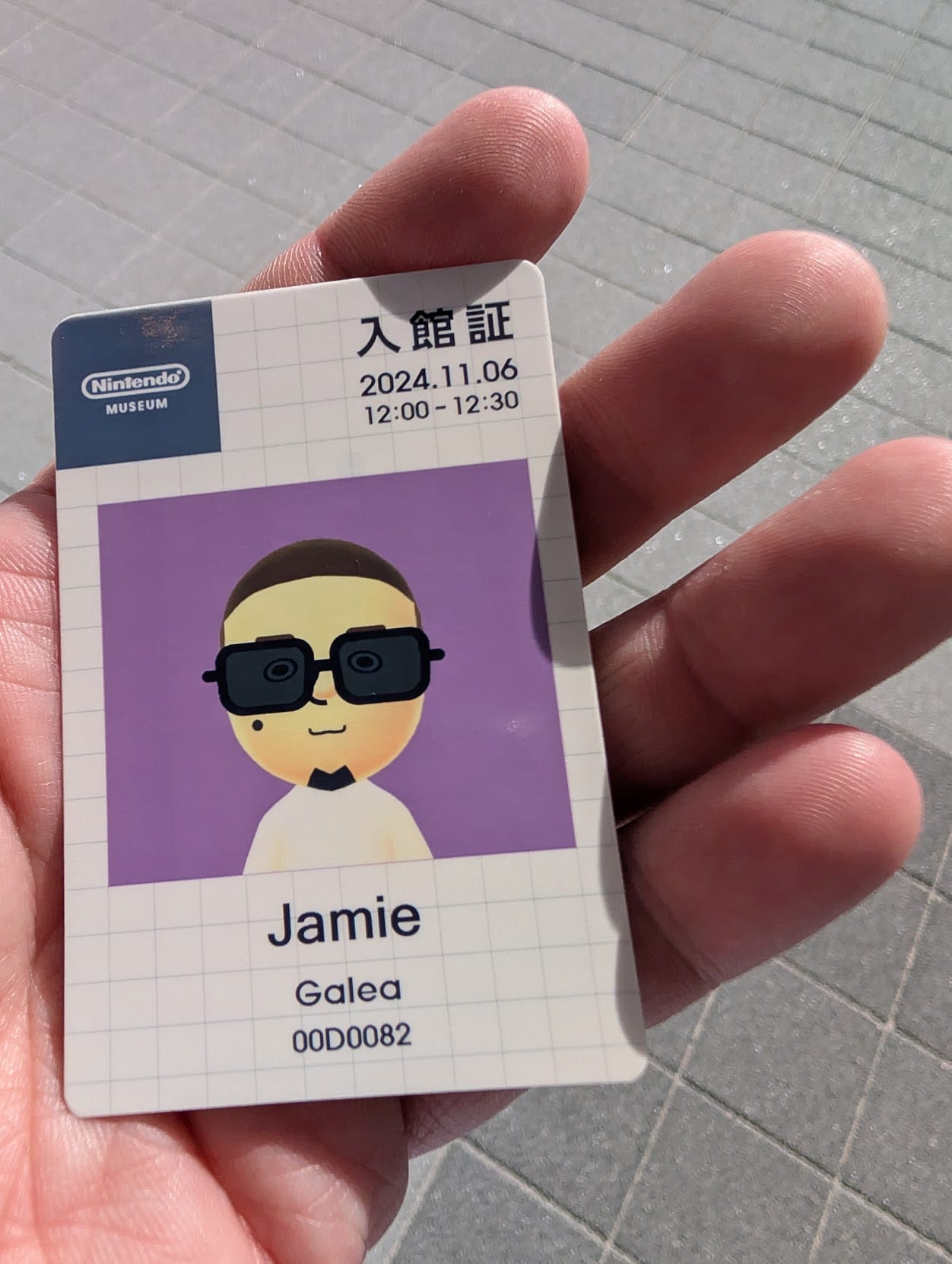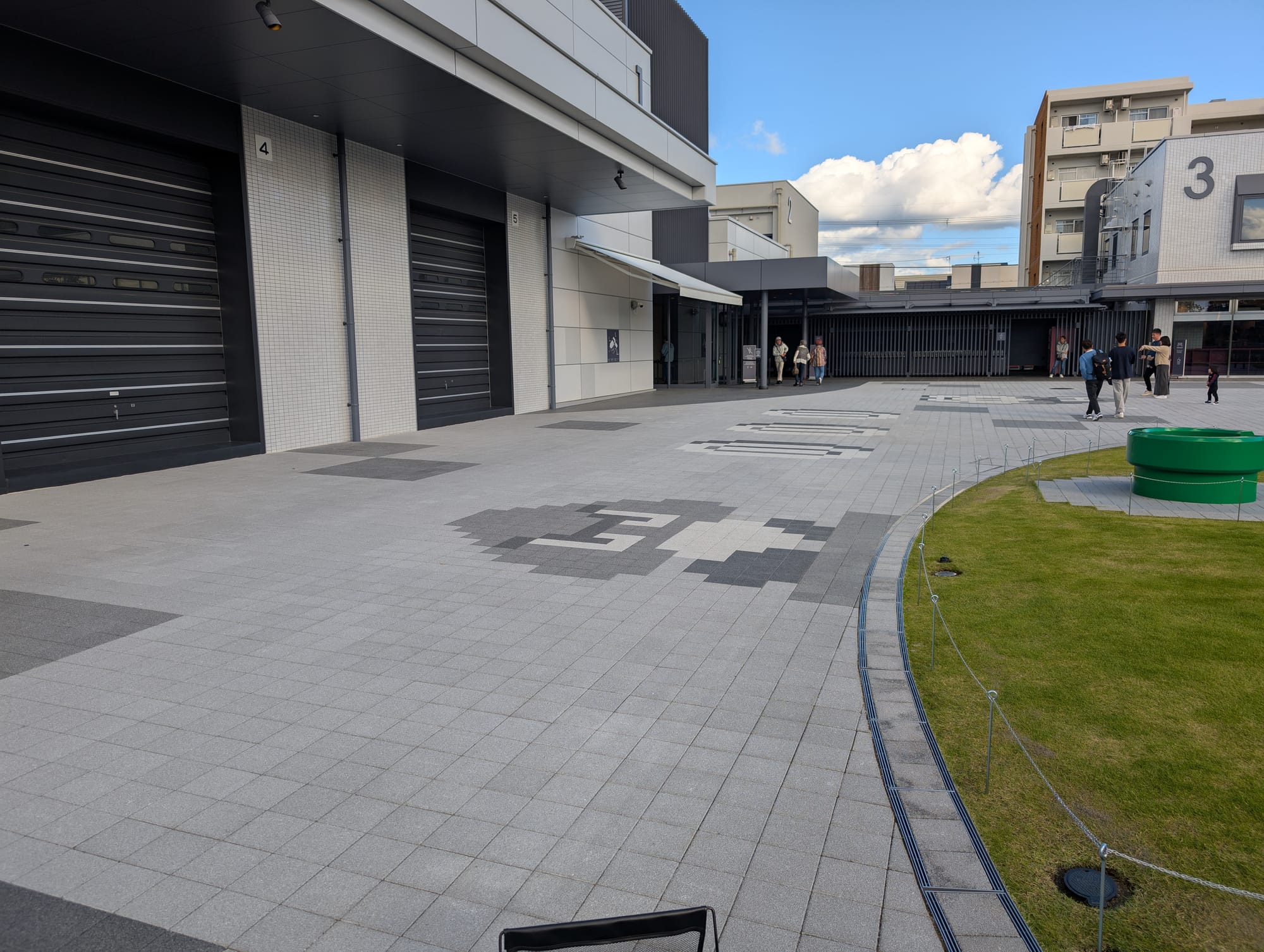I Didn’t Learn Much at the Nintendo Museum, but I Appreciated Nintendo’s History
Exploring what the new Nintendo museum in Uiji City looks like inside and whether it's worth the trip

It's been a fascinating time to be following anything to do with Nintendo. Where formally announcing a Switch successor should be the most logical announcement, they've been more interested in announcing remasters of games that needed it, alarm clocks, a music streaming app, and, most curiously, a whole museum. Situated in Uiji City on a former Nintendo card and console repair site, the Nintendo Museum attempts to document Nintendo's history in one space, should you be lucky enough to be able to purchase tickets to visit the museum.
I was fortunate enough to be selected in the ticket lottery required to get into the museum, and it was possibly the most stressful part of the most recent trip I took. Not just because of needing to win in a ticket lottery against the world, but you also need a way of calling a Japanese phone number to verify your identity. And that's not getting into the full bag, liquids, and ID check once you get onto the Museum grounds. As someone who went through domestic and international airports in both Japan and Australia, the Museum was far more probing!
The most I expected was limiting what items you could take photos and videos
of, which is fairly standard for spaces like these and something the Museum does enforce to a degree. While it makes sense with the prototype hardware on display, it does feel a little weird, considering most of the gallery space comprises game boxes, consoles, and advertisements that one could very easily see on the internet. Chalk that one up to possibly Japanese copyright law being very particular.
But I think it was all worth it because it never felt chaotic but perfectly organized. There was plenty of space to move around, lines were always moving, and staff would always be open and around to help people. I don't know if it says anything about the time and date that I went, but I felt like I never needed to rush because a new group was coming in. I could take my time and soak everything in, and it felt really satisfying.

As someone who went through domestic and international airports in both Japan and Australia, the Museum was far more probing!
The gallery, the first thing you'll see upon entering, is maybe the reason to check out the Museum, and not just because the content creator mill hasn't been let loose on it. Effectively, it's a series of rings where you can walk around and see Nintendo's history via its consoles and the games associated with them, plus their overall history as a toy manufacturer. It's close to a hundred years of history in a single space, and it's quite amazing. It's not easy or at least obvious as to where you're supposed to start, as you come in from the centre of the room, but you'll still get a good experience regardless of where you go.
It's also a great way to see Nintendo evolve over time, and not always for the better in some cases. The console displays are a great way to see pristine Japanese game boxes, and pre-Wii boxes were really something. These eras of Nintendo would focus on smaller or more vertical boxes, leading to some unique and cool art, peaking with the Nintendo 64 era. It's great that they're more uniform now, but it loses a little something. The same goes for a display dedicated to instruction manuals. They start off very plain, getting more detailed and filled with colour and character before becoming simpler and eventually going online.

Sadly, the real issue I have with a lot of this is that there's no real context behind the artefacts presented for the audience. Very little, if any, placards or information are present behind every display. Don't get me wrong, there's certainly an appeal to seeing old media presented to you and trying to parse it with contemporary eyes. It's nice to look back at the time when Nintendo gave the American box arts to Kirby games an angrier look compared to their Japanese equivalents, but you won't learn why they decided to do that.
After sampling the gallery, you then descend into the first floor, where you have a slew of exhibits and minigames you can play. It's here where you'll probably notice one of the quirks of the museum - the concept of play coins. Every visitor is granted ten to use however they wish, tied to their ticket. If you want to get another ten, you'll need to buy another ticket. It effectively means you cannot see and do everything in one go. It's something I understand Nintendo doing to ensure repeat visits, but with how difficult it is to get tickets in the first place, let alone the additional expenses needed if you live outside of Japan, it's something I hope gets addressed in the future.
Despite that, the exhibits are pretty neat. Pretty much all of them revolve around larger-scale versions of Nintendo's pre-Famicom toys but with some twists. A great example of this is Ultra Machine SP - which turns the Ultra Machine into basically a batting cage where you've got 20 balls to hit around a living room. The catch is that if you manage to hit specific parts of the space, you can trigger little interactions which also give you extra balls, complete with 1-Up noises. It proved way more satisfying to me than I expected, having never been in a batting cage in my life.

Sadly, the real issue I have with a lot of this is that there's no real context behind the artefacts presented for the audience. Very little, if any, placards or information are present behind every display.
Another notable exhibit is known as Big Controller , where you and a second person take control of an oversized controller (Famicom, Super Famicom, Nintendo 64, or Wii) in a bite-sized version of a Nintendo game. For instance, you could play Super Mario 64 on a big N64 controller in one of three scenarios. I am hoping some speedrunners end up visiting the museum because I'd love to see footage of the frankly insane Mario 64 speedrunning tech attempted on something like this.
It was also the only exhibit that I couldn't do because I was travelling solo. Museum staffers were fairly strict on this, only working in groups - there wasn't any single rider line I could use. That would be the end of the story, except something unexpected happened. It turns out there was another English speaker just hanging out in the area, who also got turned away because they only wanted groups and offered to partner up with me. Naturally, I said yes and ended up playing the first few levels of Super Mario Bros. on a gigantic Famicom controller—shoutouts to Kim from Georgia for taking the controls with a random stranger.

Hearing about these exhibits ahead of time was easily the thing I was most interested in, more so than any potential displays. While there's always an interactive element to any museum, hearing explicitly what Nintendo are doing makes it feel less like a traditional museum and more of a theme park, a business Nintendo are already involved in some 60 kilometres away in Osaka.
Yet it doesn't ever come across as a theme park, at least to me. Sure it turns these activities into effectively theme park attractions, but I feel like they're less about thrilling you and more immersing you in Nintendo's past, one that many of the people visiting would have never really experienced.
For context, my familiarity with the Ultra Machine or Ultra Hand is when they've shown up and/or referenced in later Nintendo games - I've never actually used one myself. Given the rough age group of most of the people who were visiting the museum with me, I'd wager they'd be in the same boat. The fact that they're there and given such love is pretty rad. I wasn't expecting to gain any appreciation for pre-Famicom Nintendo at the museum, but I think those exhibits definitely helped.
By comparison, I visited Universal Studios Japan the following day, finally knocking out Super Nintendo World. It's a striking, crowd-pleasing experience that is a really well-done example of making a theme park space. Yet it's incredibly mass-market and designed to be broadly appealing. Many, many people have some form of nostalgia or appreciation towards Mario. Significantly fewer have that for the Ultra Machine or Ultra Hand. I didn't learn anything new about Nintendo or appreciate anything new about their work from my time there, aside from how much I despise lining up or how much is too much to spend on merch.

I wasn't expecting to gain any appreciation for pre-Famicom Nintendo at the museum, but I think those exhibits definitely helped.
Probably the most fascinating thing about the museum is where exactly it's located. Uiji City is around 20 minutes or so by train from Kyoto Station. It's home to many, many temples. There's not much to the area, but as you're coming in you're treated to rice fields and sparseness. It's beautiful, and even though it's not exactly rural, you get the feeling of being so far away from a big metropolis that it's a refreshing experience.
The presence of the Museum is also something that will almost assuredly bolster tourism to the area (in addition to the temples). While walking from the museum and to the train station, I got stopped by two different groups of students doing field interviews, wanting to know how visitors and foreigners are taking to the city itself and what they think could be done to get them to stick around more.
I didn't have much to add, truthfully. I did like the brief time I was there, and I think the area surrounding the museum appeals to me specifically, with a CoCo Ichibanya across the road and a Book Off not much further from the Museum itself. Uiji isn't a small town - heck it's the second most populous in its prefecture - but it is far enough out of the way that unless you're big into temples, you'd be hard pressed to find other reasons to come down.
If you're able to get into the Nintendo Museum, however, it's absolutely worth a visit. I don't think you'll necessarily learn anything new you otherwise wouldn't have learned about Nintendo, but it's really cool to see so much material preserved and up for display. The interactive exhibits themselves, while maybe not the reason to go, are pretty neat in their own right. It's a good way to appreciate the history that Nintendo has, but I wouldn't base an entire trip around it.
Having said that, there's still plenty more of the Museum that I didn't get to the first time around, so if this is how they get me to come back, it's certainly not helping.